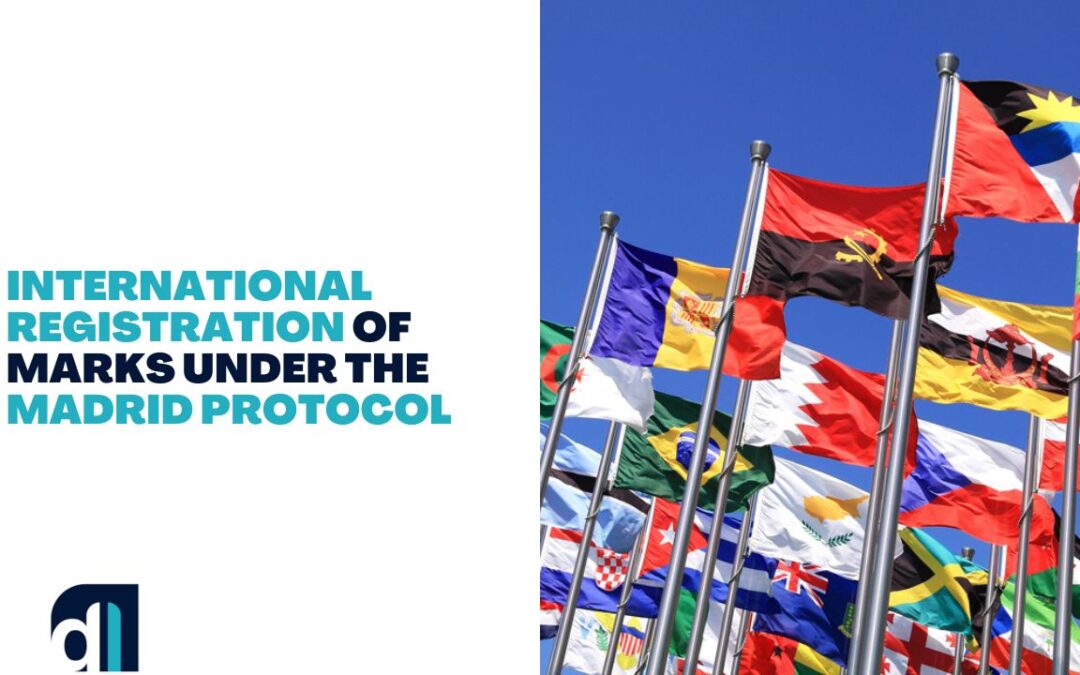The first step taken by a business for global expansion is often about assessing and acquiring intellectual property (IP) protection in the intended foreign jurisdictions. The process is a complexity in itself and requires a targeted strategy to navigate through it. On the face of it, international registrations appear to be a hassle since businesses would have to separately register their trademark in every country where they intend to expand. Fortunately, the problem has been curbed with the system of the Madrid Protocol which is a simple and unified solution for obtaining IP registrations in multiple countries.
This guide is primarily intended for applicants and holders of international registrations of marks which lists the various steps of the international registration procedure and explains the essential provisions of the said registration. Understanding the Madrid system is necessary to form a sound IP strategy, whether your business is small or large.
Madrid Protocol: A Platform for International Registrations
The Madrid System, comprising the Madrid Protocol and Madrid Agreement, is an international platform established and managed by the World Intellectual Property Organization (WIPO) which facilitates trademark owners and applicants in acquiring multiple registrations in different jurisdictions simply by filing one application in the resident country. If the WIPO approves the application, the registration holder receives protection in all the member states.
The purpose of regularizing the process on a single platform is to streamline the registration process and reduce administrative issues which come with managing multiple registrations across different jurisdictions.
Advantages of Registering Marks under the Madrid System
It is evident from the intention behind establishing the Madrid system that its purpose is to make it easy for businesses to obtain protection for their trademarks across multiple jurisdictions. The advantages of the Madrid Protocol come in the following ways:
1. Streamlined Procedure
As stated above, the purpose of the Madrid Protocol is to provide a streamlined procedure for international registration. Businesses only have to file one application with the Madrid System to acquire registrations in all the member countries. This enables them to save time and resources which would’ve been invested had they opted for individual registration for each country.
2. Cost-effective
The second big advantage is that the Madrid system is extremely cost-effective. You only have to pay a one-time application fee to the WIPO and that would suffice for all the applications. This makes the route even more attractive to business owners who intend to expand their businesses in numerous countries.
3. A unified platform
The Madrid Protocol provides a unified system for regulating international registration of marks under WIPO. Trademark owners can easily modify, update, and renew the details and registrations instead of doing so with every national trademark office individually.
4. Leverage in adding or removing jurisdictions
Since it is a unified system, trademark owners can add or remove countries from their registration or request further protection for their trademarks as per the requirements of their businesses.
Step-by-Step guide to the International Registration of Marks under the Madrid Agreement and the Madrid Protocol
Familiarizing oneself with the registration process is key to successfully obtaining international trademark registration under WIPO.
Step 1: Acquiring Base Registration
You first have to acquire a base registration i.e. registering your trademark with your resident country’s trademark office. Trademark applications under the WIPO are only registered if the mark has registration in its home country.
Step 2: Filing application with the Madrid System
After receiving your base registration, you can file an international application with the WIPO through your home country’s trademark office. In your application, you would have to specify the member countries you wish to apply to.
Step 3: Examination by the WIPO
There is a formal procedure of examination with the WIPO who thoroughly examine all the applications received before forwarding them to the national trademark offices of the foreign countries. Subsequent to this examination, the foreign offices will conduct a separate examination to determine if the mark is eligible to be registered in their territory or not.
Step 4: Success in the Application
If your application fulfils all the requirements, you will not face any office action from the WIPO and your application will be registered successfully.
Step 5: Managing and Monitoring your Registration
Acquiring registration is not enough, rather this is the first step in the process. The next phase in your trademark journey is to monitor your registration for potential infringement and manage the application for making updates, tracking renewal deadlines, and adding any new country if needed.
Making things easy for you
Understanding the Madrid system is an essential element of your trademark and commercial journey. However, merely gaining an understanding by reading a guide might not be enough. There are many intricacies and nuances in the procedure for which you need to have professional assistance to guide you.
If you wish to register the trademark of your business internationally and are looking for affordable yet effective help, you can book a free consultation today with Drishti Law to learn how our experienced principal attorney can help you successfully register your trademark internationally at a reasonable fee structure and in a minimum amount of time.

Sahil Malhotra
Sahil Malhotra is an Intellectual Property Attorney, who founded Drishti (“vision”) law because of his vision in protecting dreams and ideas.
He provided individuals and small businesses with an opportunity to enhance their IP’s value by helping them register trademarks and successfully argue against office actions. In addition to his training and experience, he has been deeply involved in the multifaceted IP portfolio at UIC and continues to be associated with IP organizations and conferences.
To know more about Sahil Malhotra — Click Here
You may follow Sahil Malhotra on Facebook: Sahil Malhotra and on Instagram: @Sahil Malhotra

